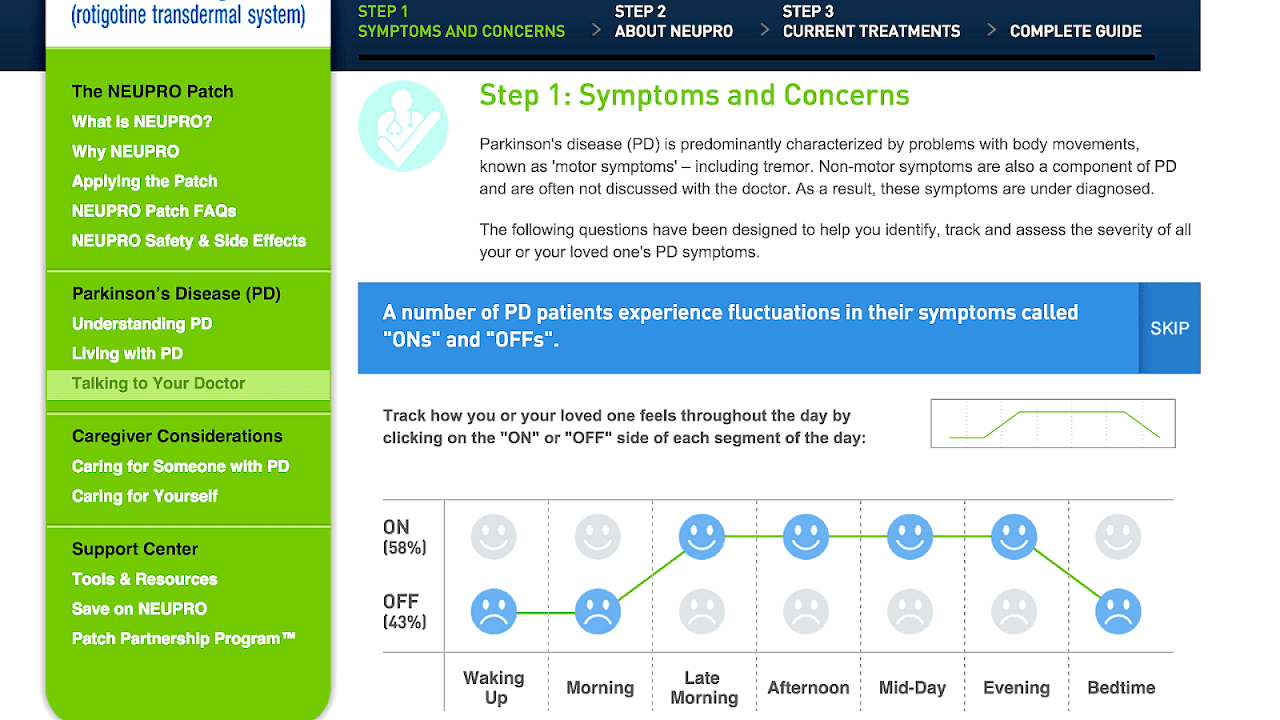
Rotigotine (Neupro) is a dopamine agonist of the non-ergoline class of medications indicated for the treatment of Parkinson's disease (PD) and restless legs syndrome (RLS). It is formulated as a once-daily transdermal patch which provides a slow and constant supply of the drug over the course of 24 hours.
Like other dopamine agonists, rotigotine has been shown to possess antidepressant effects and may be useful in the treatment of depression as well.

Maps, Directions, and Place Reviews
History
Rotigotine was first developed in 1985 as N-0437 by a team from the University of Groningen. Development was then continued by Aderis Pharmaceuticals. In 1998, Aderis licensed worldwide development and commercialization rights for rotigotine to the German pharmaceutical company Schwarz Pharma (today a subsidiary of the Belgian company UCB S.A.).
The drug has been approved by the EMEA for use in Europe in 2006 and is today being sold in several European countries. In 2007, the Neupro patch was approved by the Food and Drug Administration (FDA) as the first transdermal treatment of Parkinson's disease in the United States. However, as of 2008, Schwarz Pharma has recalled all Neupro patches in the United States and some in Europe because of problems with the delivery mechanism. The patch was reformulated, and was reintroduced in the United States in 2012.
Rotigotine has been authorized as a treatment for restless legs syndrome since August 2008.

Side effects
General side effects for rotigotine may include constipation, dyskinesia, nausea, vomiting, dizziness, fatigue, insomnia, somnolence, confusion, and hallucinations. More serious complications can include psychosis and impulse control disorders like hypersexuality, punding, and pathological gambling. Mild adverse skin reactions at the patch application site may also occur.

Pharmacology
Rotigotine acts as a non-selective agonist of the dopamine D1, D2, D3, and, to a lesser extent, D4 and D5 receptors, with highest affinity for the D3 receptor. In terms of affinity, rotigotine has 10-fold selectivity for the D3 receptor over the D2, D4, and D5 receptors and 100-fold selectivity for the D3 receptor over the D1 receptor. In functional studies however, rotigotine behaves as a full agonist of D1, D2, and D3 with similar potencies (EC50). Its ability to activate both D1-like and D2-like receptors is similar to the case of apomorphine (which notably has greater efficacy in the treatment of Parkinson's disease than D2-like-selective agonists but has suboptimal pharmacokinetic properties) and pergolide but unlike pramipexole and ropinirole.
Rotigotine possesses the following in vitro receptor binding profile:
All affinities listed were assayed using human materials except that for ?2B-adrenergic which was done with NG 108-15 cells. Rotigotine behaves as a partial or full agonist (depending on the assay) at all dopamine receptors listed, as an antagonist at the ?2B-adrenergic receptor, and as a partial agonist at the 5-HT1A receptor. Though it has affinity for a large number of sites as shown above, at clinical doses rotigotine behaves mostly as a selective D1-like (D1, D5) and D2-like (D2, D3, D4) receptor agonist, with its ?2B-adrenergic and 5-HT1A activity also possibly having some minor relevance.
Source of the article : Wikipedia


EmoticonEmoticon